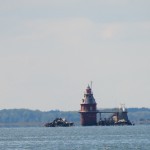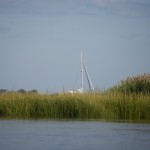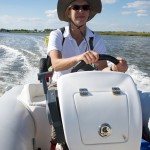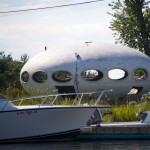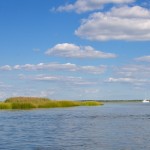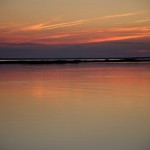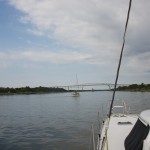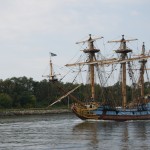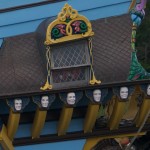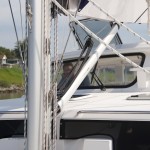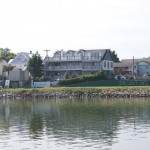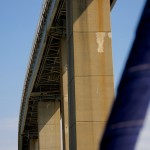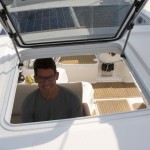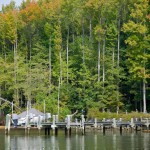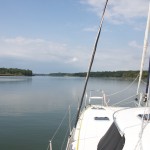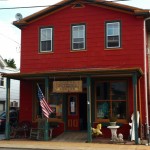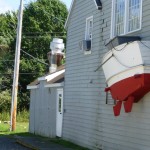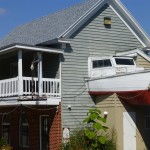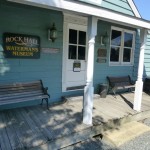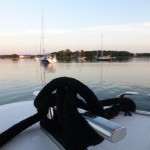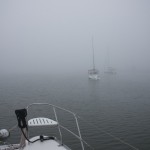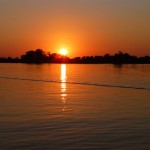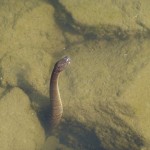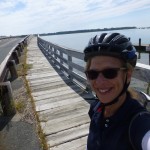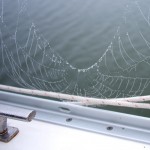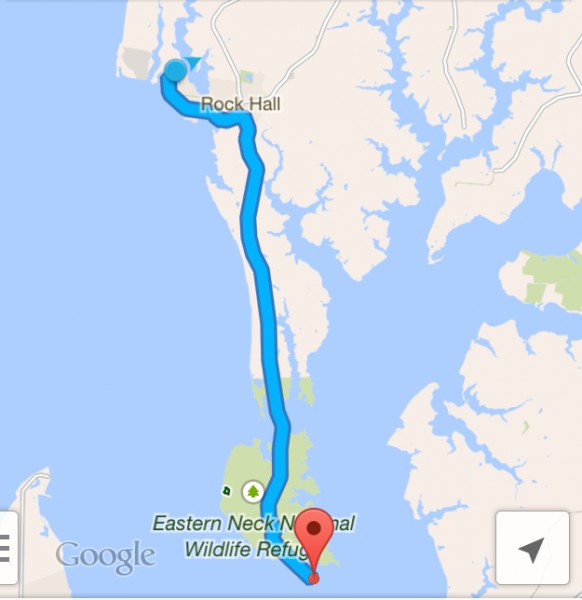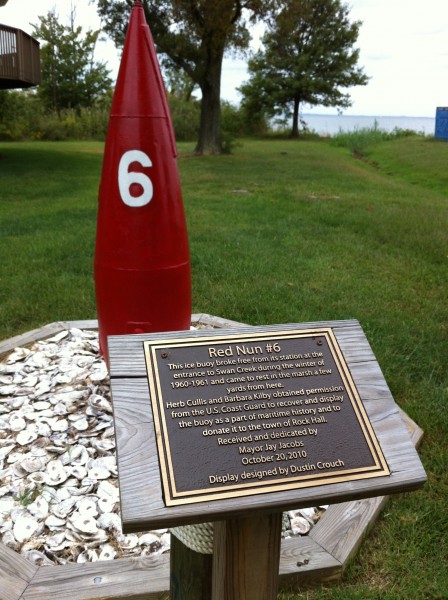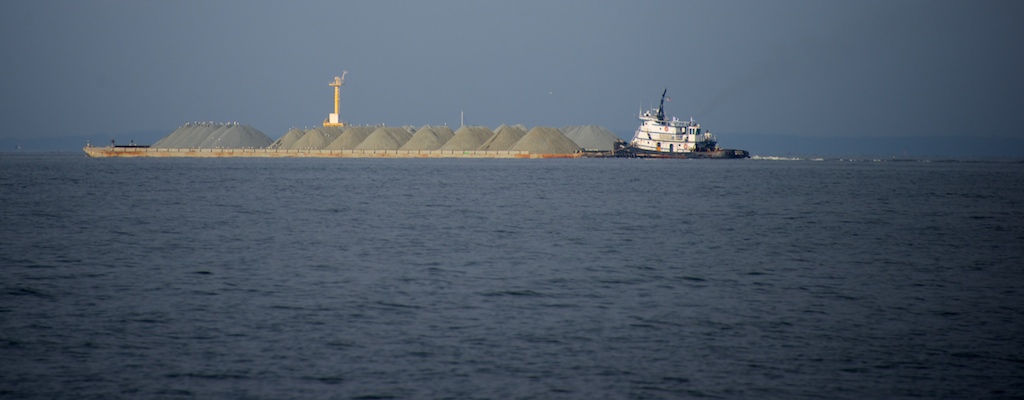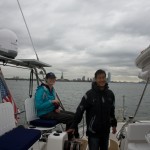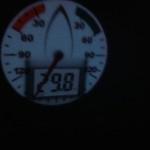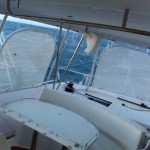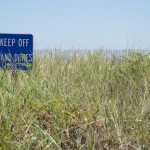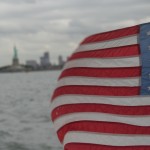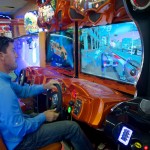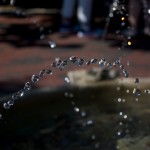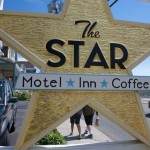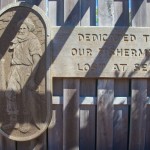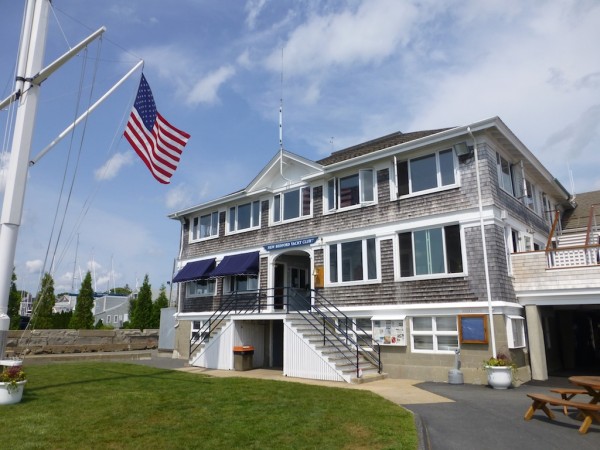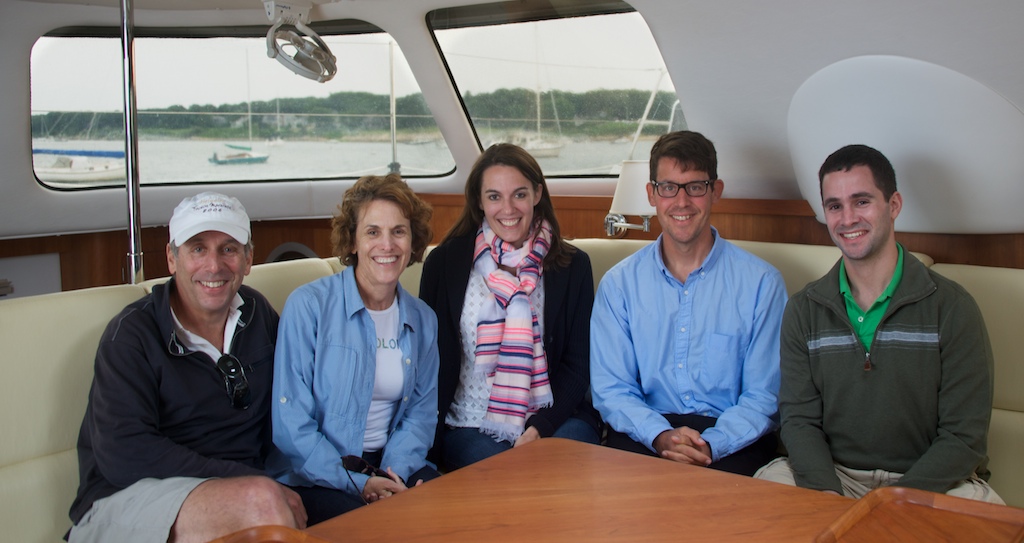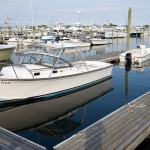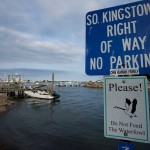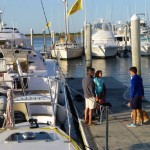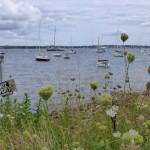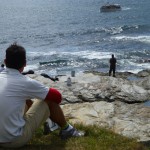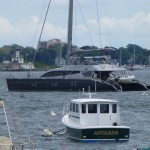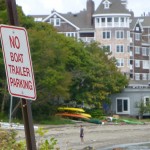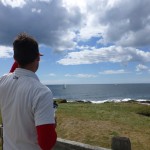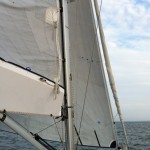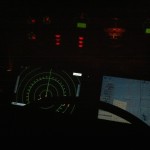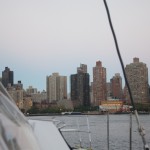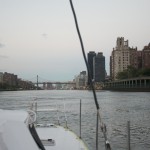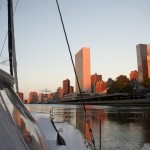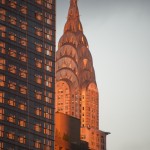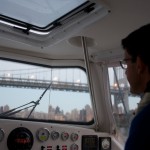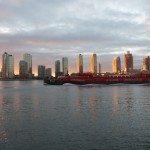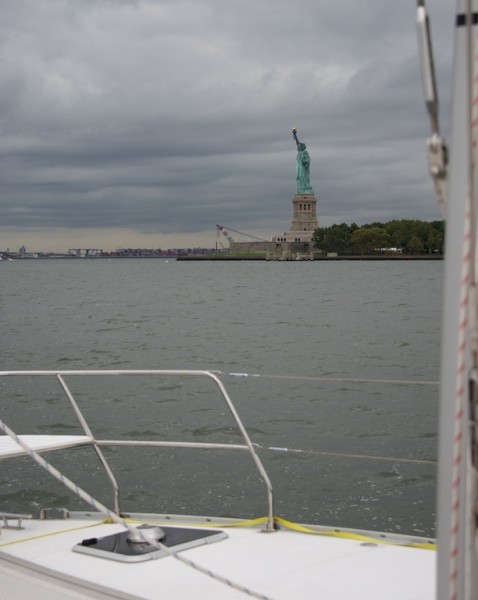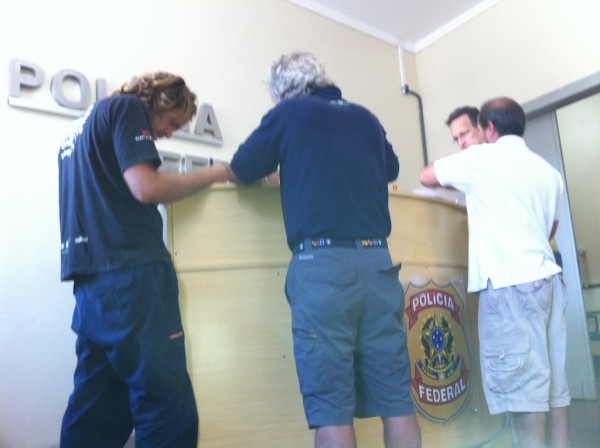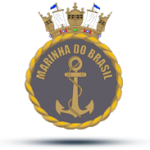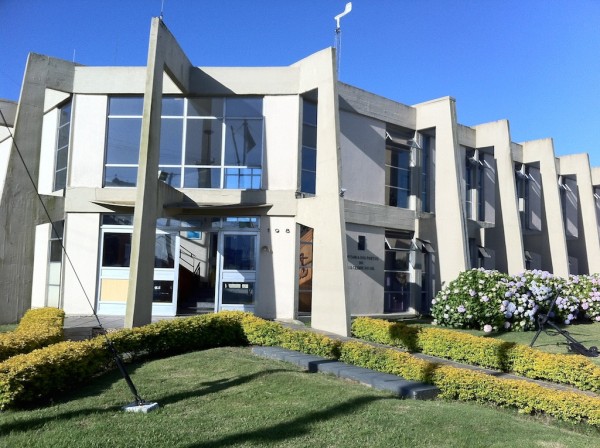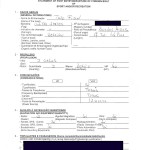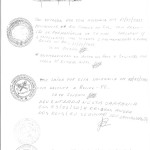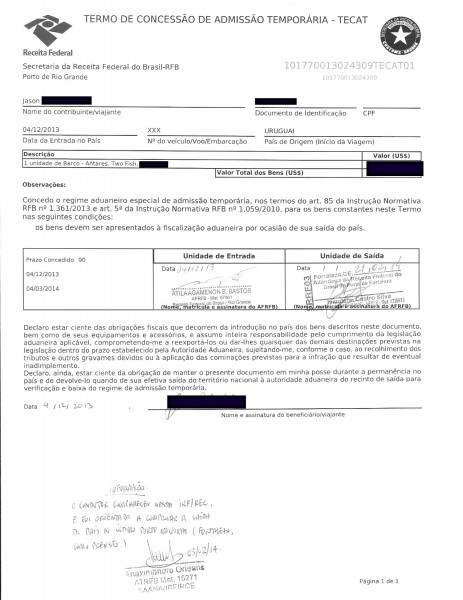Once again, Jason has accused me of getting soft. And, once again, I replied “Soft is good”. Jason enjoys the tough passage and I enjoy touring a new town. Jason’s accusation was driven by our recent marina stops. When not anchored in a remote bay, are we really cruising? Our trip south has taught us that there are many styles of cruising. Two Fish is still figuring out her preferred mix. As we pulled out of our most recent marina in New Jersey, I was looking forward to the beauty of Chesapeake anchorages.
But first, we had to traverse 50 miles north to reach the Chesapeake and Delaware Canal. When we turned the corner at Cape May, I was a bit concerned when I saw a waterspout in the distance. It didn’t seem like the weather for spouts, but there definitely was some distinctly swirly cloud thing on the horizon. I looked on the radar screen and didn’t see anything. I tried to determine the direction it was moving, and it wasn’t. I asked Jason what he thought. We tried to ignore it. It didn’t go away. Then we heard some boats a few miles up the Delaware Bay chatting on the VHF radio: the waterspout was the smoke stack for the nuclear plant at the top of the bay. Okay. Now I felt better. Sort of.
Our first anchorage was at the mouth of the Cohansey River. It was exceptionally quiet; we only saw two boats pass by while we were there. We took One Fish through the many bends of the river and after 6 miles arrived at the town of Greenwich, NJ. There was no wind that night – a perfect spot. We later spoke with other cruisers who had tucked away there in more stormy conditions. After being abused by short waves and terrorized by hidden crab pots, they did not describe the spot with the same superlatives.
- Cape May Light
- Quiet Spot for Two Fish
- One Fish Planing
- Aliens Land in NJ
- Back to the Boat
- Good Night
The next morning, we headed towards the Chesapeake & Delaware (C&D) Canal. Eager to catch the current, we timed our arrival carefully. Unfortunately, both MaxSea and Eldridge were wrong on the direction and strength of the tidal current. The error seemed hard to explain since there had been little wind or rain, the usual causes of changes to tidal currents. We heard other boats on the VHF being surprised as well. We motored more than we sailed because of the light winds. I have been surprised by the amount that we run the motors. Light air is not bad news for me, as I prefer motoring in flat seas to 30 knots and boat-shaking waves. Jason will never succeed in changing my mind, but I do enjoy seeing his enthusiasm for the big breeze days. Our division of helm time is very wind dependent. As the breeze drops my appearances at the helm become more fleeting. I am ready to help if Jason needs a hand tucking in a reef, but generally he is okay alone on deck. I feel much better in the safety of the master cabin.
We were excited to pass Chesapeake City – Mile Zero of the Chesapeake. Our New England cruise was now in the rear view mirror and we were about to explore places we had never properly visited.
- Chesapeake & Delaware Canal
- Tall Ship heading home
- Ship Detail
- Navigator
- Chesapeake Mile Zero
- Under the Bridge
- Calm Waters
- C&D Canal
- Transit
- Time to Anchor
We found a wonderful anchorage in the Sassafras river – no root beer. Once again, we buzzed up river on One Fish to explore. The walk was a bit of a flop, as we walked a major rural route with large trucks and soy bean field vistas. We did discover The Granary in Georgetown. It was here that I broke my crab cake ban. The ban is a failed attempt to reduce the crab pot population. I have previously complained about lobster pots but the Maryland Crabber has much to learn from the Maine Lobsterman. The Crabman’s buoys, used to mark his pots, are often faded and dirty and thus look black against the dark sea. The Maine Lobsterman has more pride in his work, and keeps his buoys clean and brightly painted. These infestations of crab pots encourage Two Fish to sail on the edges of the main shipping channel. I have to confess I like both lobsters and crabs, so my boycott is doomed to failure.
- Georgetown
- Oops
- Made it
- Shuttered Museum
- Swan Creek
- Good Time to Stay Put
- Another Sunset
- Waterman
- Friend at the Bridge
- Eastern Neck Bridge
- Local Farm
- Must be time to go
Our next stop was Swan Creek, adjacent to the famous crab town of Rock Hall. We grabbed a mooring ball right next to the channel so were able to watch the parade of boats enter and exit the area. I rode my bike to Eastern Neck – a local fishing bridge. Judging from the empty buckets, I think there might have been a bit more gabbing than fishing.
It was a short walk to Rock Hall; unfortunately, the Watermen’s museum was in mothballs but we had a
good meal at The Kitchen at Rock Hall. Other off-boat meals were at the local Harbor Shack, which on a Sunday afternoon is filled with fans dressed in full Baltimore Raven gear. Fortunately, they were not playing the Eagles that week. (Yes, I realize they are in a different conference. Reminder: I should check my fantasy football lineup for this week).
The ice buoy in the photo was a new navigation aid for me. I learned that many aids to navigation are picked up by the Coast Guard during the winter but some important locations are marked by Ice Buoys. These are conical buoys that are harder to see but are less likely to be damaged by ice.
Next stop: Baltimore.


